Lithium-ion batteries are present in most of our electronic devices. Laptop, smartphone or tablet, they are everywhere. Despite everything, this relatively old technology is not well known to the general public. So let's study with this folder the myths about lithium-ion, the tips to preserve the best battery life and finally let's discuss the future of this technology.
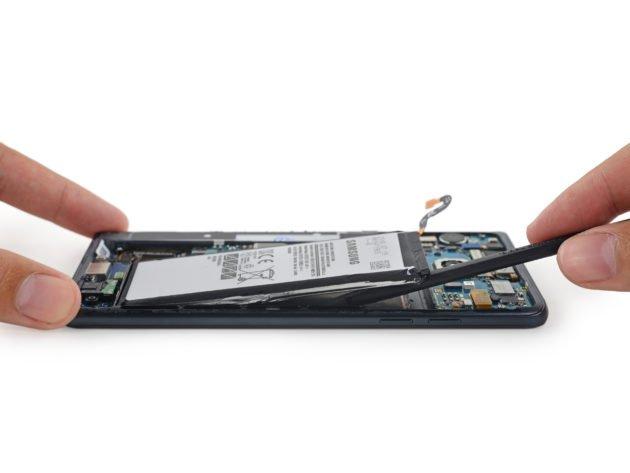
File updated in July 2019.
Universal technology: Lithium-ion
All current smartphones and tablets use the same technology for batteries called lithium-ion (or li-ion for close friends). No more NiCd and NiMH that could be found in the very first smartphones as well as in DECT landline phones.
Does it ring a bell ? But if, you know, the ones who stay at home and can't go on the Internet. You are given the details of the chemical reaction that takes place inside the accumulator. This is what makes it possible to supply a device with electricity connected to the battery.
Several reasons make li-ion a more advantageous technology: a greater capacity, a slower discharge and the disappearance of the memory effect. Li-ion is more expensive to produce, however, and batteries are more prone to aging. Even if you don't use it for a few years, it will still lose a good deal of its capacity..
To read on the subject
What are the best smartphones to choose for their autonomy in 2021?
Compared to old technologies, the operation of Li-Ion has changed a lot. Myths like "you should never recharge your battery if it is not empty" persist and we will address them in order to confirm or dismantle them for the most part. But first, let's go back to the principles of li-ion.
A few reminders about Lithium-Ion batteries
Battery cycles
Li-ion batteries have a maximum number of cycles before which their autonomy will begin to collapse. One cycle represents a complete discharge followed by a complete recharge of the battery. The advantage of li-ion is its flexibility: if you discharge your battery to 50% then recharge it to 100%, this will be equivalent to ½ cycle knowing that current li-ion batteries have a lifespan of between 500 and 1000 cycles charging.
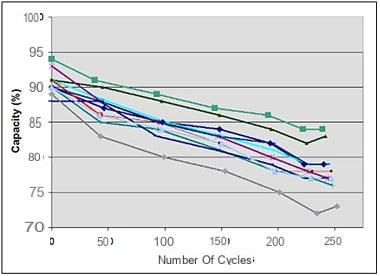
The memory effect
The memory effect of li-ion batteries has been completely removed. The latter could intervene on NiCd and NiMH batteries. The latter had to be discharged regularly up to a certain percentage (for example 25%) before being recharged again.
The battery then believed that the point at which the discharge used to stop (25%) was the zero level of its capacity. But this is no longer the case for the li-ion.
So you can recharge your battery at any time, without worrying about the remaining capacity.. Since a cycle is counted only when a full discharge / recharge is performed, the battery will not be affected by short bursts of recharging. It's good to remember that charging a phone 50-100% only counts for half a cycle.
Deep discharge
Moreover, it is better to recharge your battery before it drops below the 5% capacity threshold. When the battery reaches the deep discharge threshold many times, a reversal process takes place within the battery and one of the cells can be damaged and no longer be recharged.
Even if manufacturers do not indicate the number of cells, there is a good chance that smartphone batteries include 3. A missing cell therefore means a loss of autonomy of 33%. Avoid going below 5% charge as much as possible, even if manufacturers always try through software optimizations to keep a little charge (the phone turns off before the battery is completely empty).
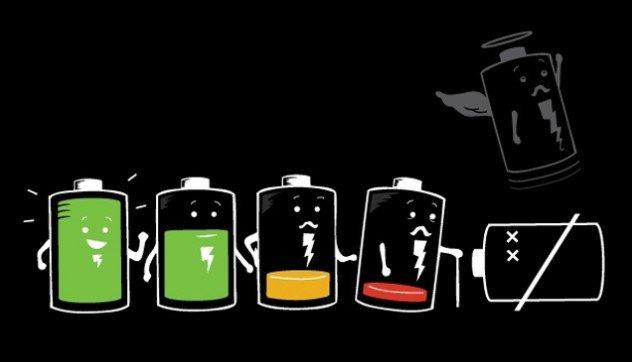
Recalibrate the battery
If it often happens that you briefly recharge your mobile device without subjecting it to a full discharge / recharge, you should remember to recalibrate the battery each month. To calibrate the internal battery management system, it suffices to discharge it completely (without exceeding 5% of discharge) then to recharge it completely..
For more details, you can also consult our tutorial dedicated to this subject.
LEARN MORE
How to recalibrate the battery of your phone?
Some advice on Li-Ion batteries
Should a charged battery be left connected to the mains?
Another ancient myth that dates from previous technologies. We were then told to leave the battery connected to the charger a few hours after it had reached 100%. But it is useless and can be harmful in some cases.
In most cases, using the original charger or products that comply with European regulations, a mechanism cuts off the recharging of the battery once it is full.
The energy then delivered by the charger is only used to power the smartphone so that it does not have to use the battery. Beware of counterfeit chargers and accumulators which often come from Asia without respecting European regulations.. These products rarely incorporate the components that are supposed to protect equipment and people in the event of a problem. In the best case scenario, your battery will see its capacity reduced. But in the worst case, the battery may catch fire and explode.
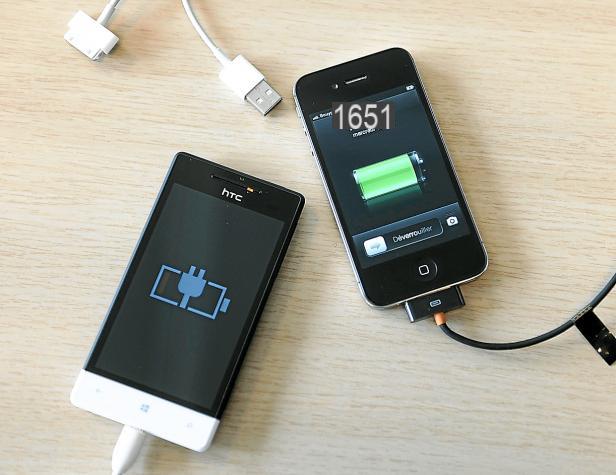
Do I need to charge the battery the first time I use it?
The answer is short: DON'T. The battery knows its maximum capacity and there is no point in recharging it from the first use. You can therefore quietly unpack your new smartphone and use it directly without having to wait for it to recharge. Note that if you use your smartphone while it is charging, it gives off more heat, which can damage it in the long run..
Heat, the worst enemy of batteries
Heat is bad for batteries. And the latter heat up a lot when they are in the recharging phase. Once again, it is therefore more interesting to carry out short recharges rather than a full recharge.
Using your smartphone while it is charging is also a bad idea, as the heat emitted by the components of the phone will add to that emitted by the battery and therefore increase the heat of the accumulator. In the same way, wireless charging technologies are not very good for batteries.
Part of the energy used to charge the device is transformed into heat due to the energy losses inherent in wireless charging technology such as Qi. For example, a battery stored for a year at 0 ° C will lose 2% of its capacity while at 40 ° C, it will have lost 15%. Stored at 60 ° C, the accumulator will lack 25% of capacity.

How to store a battery that is not in use?
If you do not expect to use a battery for a while, it should be prepared. A battery will retain the majority of its capacity if it is charged to 40% before being stored.
You should know that the battery discharges itself without being used. If it is kept at around 0%, it risks going into a state of deep discharge and thus risks destroying the cells. If kept in near 100% state, the voltage within the battery is too high and its capacity will degrade over time.
The battery should also be stored at the lowest temperature., 0 ° C is not risky, as the components start to freeze at around -30 ° C. For example, a battery stored for one year at 0 ° C and charged at 40% will have lost only 2% of its capacity, while one charged at 100% will have lost 4% of capacity. The same battery stored at 25 ° C will have lost 4% of capacity when stored at 40%. If it is stored while it was 100% charged, it would lose 20% of its quantity.
If your smartphone no longer wants to charge at all, you can always consult our dedicated tutorial. This may help you fix it.
LEARN MORE
What to do with a phone that no longer charges? - Tutorial for beginners
Does turning off WiFi or Bluetooth really help?
If you want to maximize battery life, some people will advise you to turn off certain network options like Bluetooth, WiFi, or NFC. It doesn't help much.
Bluetooth has evolved to be a technology that consumes almost nothing in terms of autonomy, it can remain activated and not influence the battery drain just like the NFC. For WiFi, being connected to this network consumes less energy than being connected to 4G because it is much more stable if you receive a strong signal. Just like receiving a strong 4G signal will be more economical than receiving a weak signal.
Fast charging technologies
There are ultra fast chargers that offer to charge the battery in a few tens of minutes. In fact, in recent years, we have witnessed a slew of new technologies. Whether it's Quick Charge, VOOC, Dash Charge, they all follow the same principle.
Fast charging therefore consists in sending a very large power on the first half of the load, then in finely regulating this power on the second half. This last exercise is the most delicate, in order not to damage the battery. To find out more about the different fast charging technologies, we invite you to read our file dedicated to these technologies.
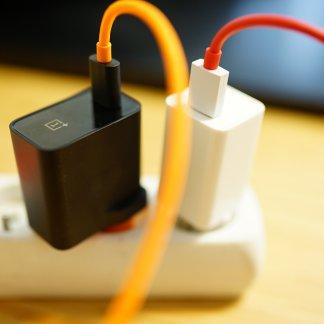 Quick Charge, Fast Charge… How does the fast charge work on a smartphone?
Quick Charge, Fast Charge… How does the fast charge work on a smartphone?


Want to know the difference between QuickCharge, Dash, Vooc, Pump Express? This article should help you see more clearly in the jungle of fast charging on smartphones.


























